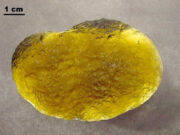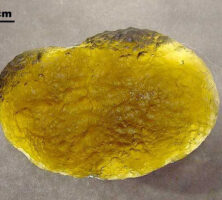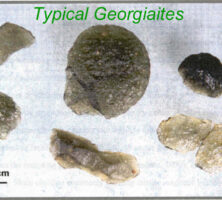Georgiaites, found in the soil of Georgia’s Coastal Plain, are rare natural glasses produced by asteroid or comet impact. These rounded, translucent olive green masses average one to two inches in diameter and commonly have pitted surfaces. Georgiaites, like arrowheads, are often found in areas where the soil has been disturbed, such as in freshly plowed fields and gravel pits. Of the approximately 1,700-2,000 georgiaites found to date, most are from Dodge and Bleckley counties, although a few have been found in surrounding counties. Perhaps the most intriguing aspect of georgiaites is their age; scientists have dated several of them at 35 million years old.
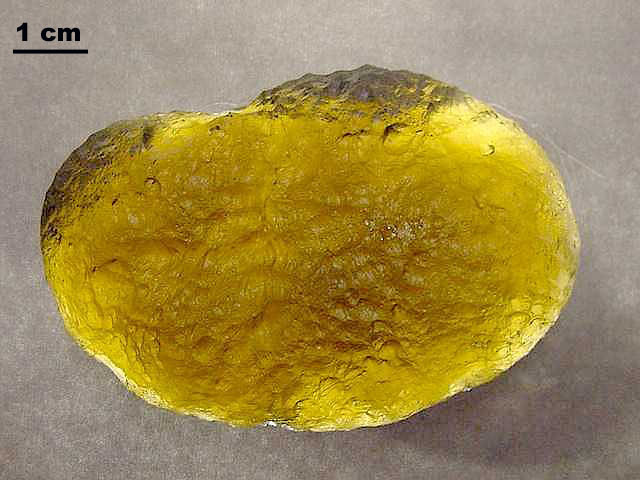
Photograph by Edward Albin
Superficially, georgiaites look like volcanic glass, or obsidian; however, there was no volcanic activity in or near Georgia 35 million years ago, and georgiaites lack the mineral crystals that characterize volcanic glass. Natural glasses of the same age from Texas, called bediasites, and smaller spherules of glass dating from the same era have been found in deep-sea sediments off the eastern coast of North America and in the Gulf of Mexico. Natural glasses of different ages have also been found in central Europe (15-million-year-old moldavites), in Africa’s Ivory Coast (1-million-year-old tektites), and in Indochina and Australia (800,000-year-old indochinites and australites). All of these glasses, including the georgiaites, are known as tektites.
The Georgia glasses were first recognized as tektites, based on a sample collected by Dewey Horne in Dodge County, in 1938 by E. P. Henderson of the Smithsonian Institution in Washington, D.C. They were named georgiaites in recognition of their geographic distribution. Georgiaites have been linked to the Chesapeake Bay Crater, which lies beneath sediments of the Chesapeake Bay in southeastern Virginia. The crater is about fifty miles wide and formed as the result of an asteroid or comet, with a diameter of about two to three miles, colliding with the earth’s surface. The age of this crater is identical to the age of the georgiaites.
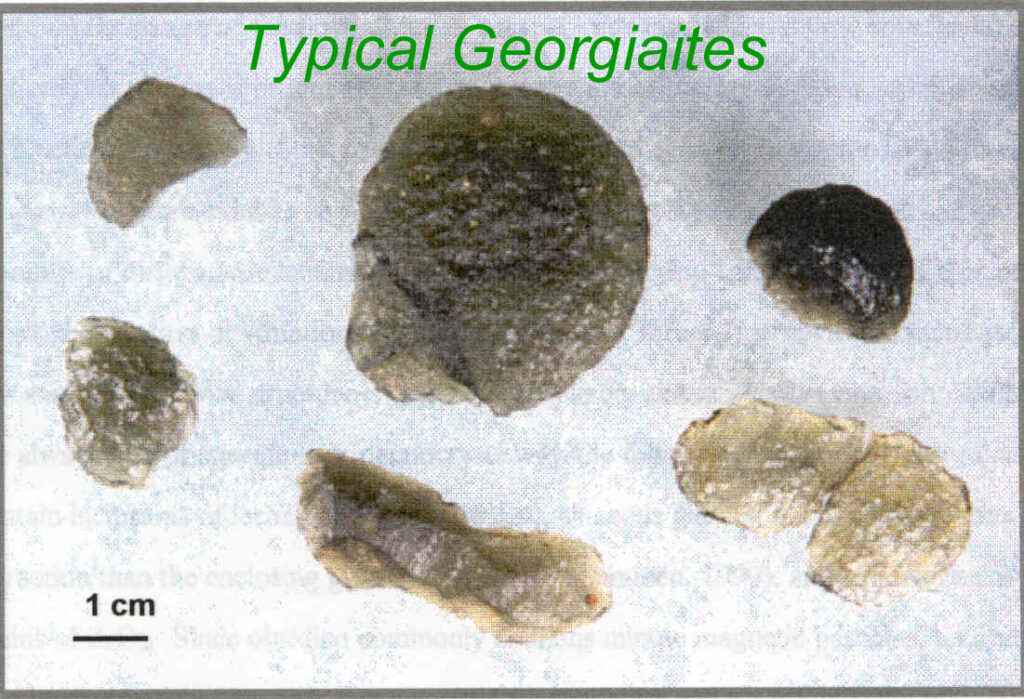
Photograph by Edward Albin
All tektites are thought to be impact glasses; that is, they represent material that was melted as a result of heat generated by the impact of an asteroid or comet on the earth. The energy produced by one of these impacts is tremendous—some meteorites travel at velocities of more than forty miles per second before they hit the earth, and the largest of these meteorites produce craters. The energy released by a large impact can result in the melting of a thin layer of the earth’s uppermost crust. The chemical composition of tektites is consistent with this idea; tektites have the same chemical makeup as the rocks of the earth’s crust. Some scientists had suggested at one time that tektites came from the moon, but lunar rock samples have been found to be chemically distinct from most tektites.
Georgiaites and the other tektites are natural curiosities, but they also have a modest commercial value as collectibles. Some tektites, especially the moldavites, are quite pleasing in appearance and are made into jewelry.


